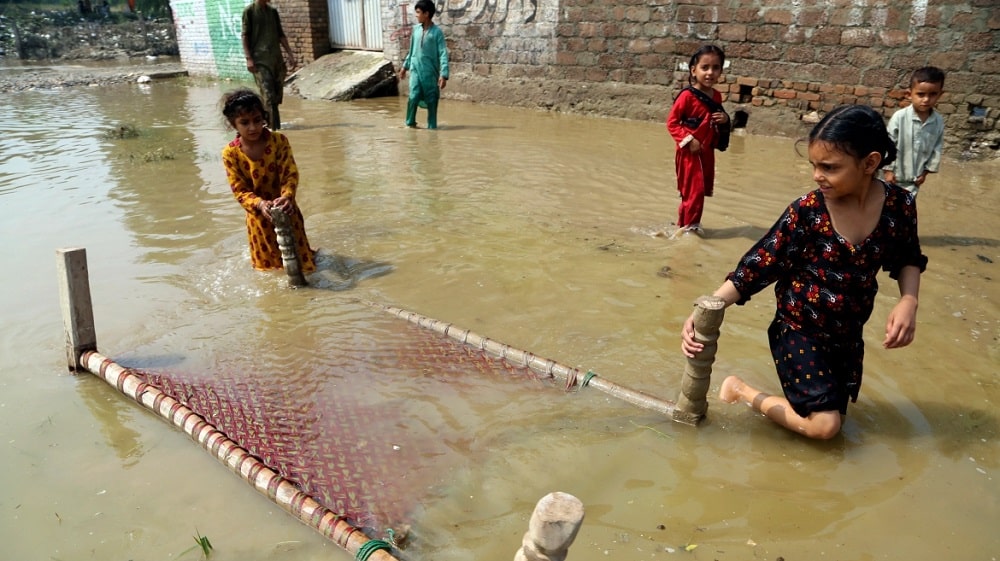The federal government has utilized 41.5 percent of the budget under the Asian Development Bank (ADB)’ “Building Resilience with Active Countercyclical Expenditure” (BRACE) Program during the quarter ending on December 31, 2022.
In its initial quarterly report, the Ministry of Finance expressed satisfaction with the performance of the Countercyclical Development Expenditure Program (CDEP) within the BRACE initiative.
ADB approved a countercyclical support facility loan with a size of $1.5 billion on October 21, 2022- Building Resilience with Active Countercyclical Expenditures Program (BRACE) in order to support the government’s efforts to provide immediate relief to the people of Pakistan.
The program was aligned with the government’s strategic priorities and the overarching objectives of promoting social inclusion by strengthening the support provided to poor and vulnerable groups, improving economic resilience, and supporting the trade-related sectors, ADB Strategy 2030 and ADB’s country partnership strategy (2021-2025).
According to the report, total revenues during the first half of FY2022-23 grew by 18.8 percent to reach Rs. 4,699 billion against Rs. 3,956 billion in the same period of last year. The major contribution to this growth came from a 26.4 percent increase in non-tax collection, while tax collection has also shown remarkable performance by posting a growth of 17 percent during the first half of the current fiscal year.
On the other hand, total expenditures grew by 19.8 percent to Rs. 6,382 billion in Jul-Dec FY 2023 against Rs. 5,328 billion in the same period last year. Current expenditures increased by 30 percent to Rs. 6,061 billion in Jul-Dec FY 2023 against Rs. 4,676 billion in the comparable period of the last year. The bulk of this rise stemmed from a sharp rise in mark-up payments which grew by 77 percent driven by higher servicing on domestic and foreign debt due to a higher level of interest rates.
The Public Sector Development Program (PSDP Federal and Provincial) grew by 4.5 percent during the first half of the current fiscal year.
Thus, the fiscal deficit during Jul-Dec FY2023 has been contained at 2.0 percent of GDP as it was in the same period last year while the primary balance posted a surplus of Rs. 890 billion (1.1 percent of GDP) against the surplus of Rs. 81 billion (0.1 percent of GDP) last year.
According to the report, an amount of Rs. 3.7 billion has been allocated to Pakistan Bait ul Mal and as per strategy for the release of the budget being issued by the Finance Division, 40 percent, i.e., an amount of Rs. 1.48 billion released to Pakistan Bait ul Mal till 31 December 2022 which has been fully utilized on different initiatives.
In addition to that, BISP has also dispersed an amount of Rs 50.420 billion on account of Emergency Flood Relief Cash Assistance i.e. 50.188 billion in 1st Quarter and 0.232 billion in 2nd Quarter as per direction of the Federal Government.
The scheme was an extension of the Fuel Subsidy Scheme launched in mid-June 2022 to provide Rs. 2,000 per family to cushion against the negative impact of an unprecedented rise in prices of petroleum products. The amount could be utilized for the purchase of fuel or any other household item as per the requirement of the targeted family.
The government allocated Rs. 25 billion for the program but only Rs. 16.76 billion was utilized to cover 8.36 million families.
To continue the benefits of the scheme in the next financial year i.e. 2022-23, an amount of Rs. 48 billion was allocated to BISP under Fuel Subsidy Scheme. However, due to unprecedented rain during the month of July and August 2022 and subsequent floods in low-lying areas, the amount for fuel subsidy was reallocated to Flood Relief Cash Assistance, whereby the Government committed an amount of Rs. 70 billion.
According to the report, a subsidy amounting to Rs. 14.03 billion till December 2022 has been given to the five export-oriented industries in gas/RLNG supply tariff on the Sui Northern Gas Pipeline (SNGPL’s) network out of which Rs. 4.55 billion has been released to SNGPL against the tariff differential whereas Rs. 9.47 billion subsidy is estimated to be required for the export-oriented sectors.
Meanwhile, the government made an allocation of Rs. 7 billion for the FY 2022-2023 However, to date, no release has been made from Rs. 7 billion.
According to the report, the persistent Challenges included High fuel as well as edible oil prices as the impact has almost doubled for the poor.
The Russian-Ukraine war crisis has a serious impact on poverty that can increase the burden on the already tightened fiscal space besides Rising inflation, particularly food inflation (highest in the history of Pakistan), increase in administered prices of petroleum products, electricity, and gas and continuous depreciation of the country’s currency have a negative impact on household consumption which will lead to greater poverty, particularly in rural areas.
The quarterly progress report (end 31 December 2022) shows that the financial progress achieved till 31 December 2022 on CDEP is satisfactory as 41.5 percent of the budget, under social protection, is utilized. To support the business and agriculture sectors, the government is taking measures to generate employment, protect job losses, and ensure food security.
The overall financial progress achieved shows that 38.3 percent of the budget has been utilized till 31 December 2022, which is expected to improve in the remaining two quarters of FY 2022-2023.





















